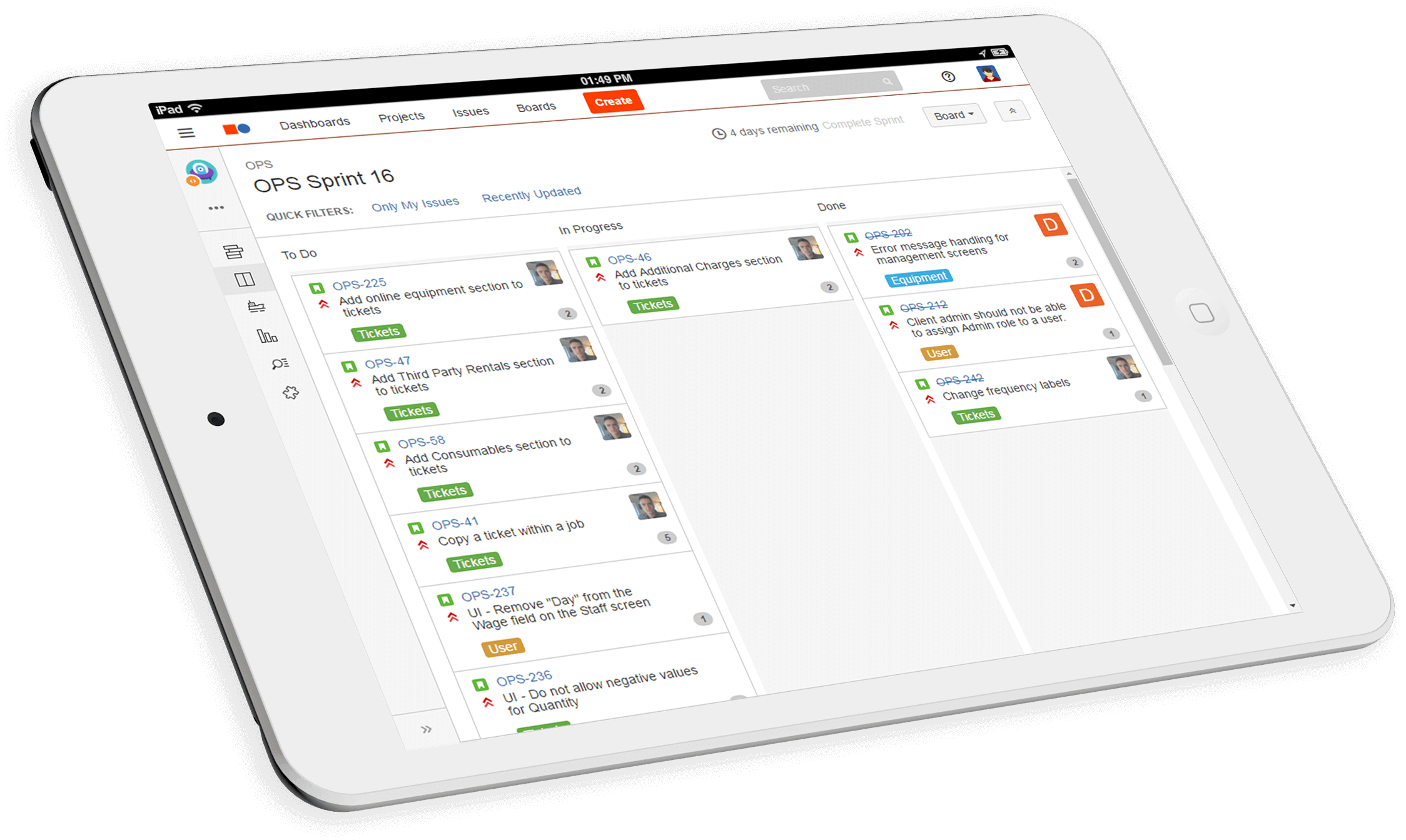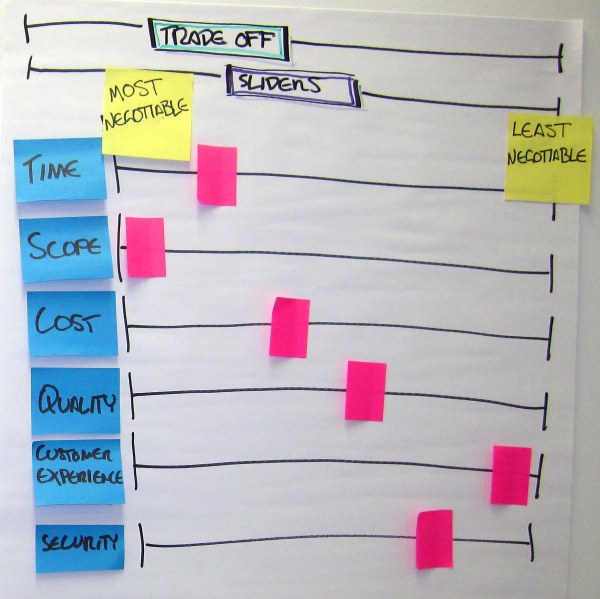Why Agile Software Development Budgeting Works Best for Your Business, without the Handcuffs
Individuals and interactions over processes and tools
Working software over comprehensive documentation
Customer collaboration over contract negotiation
Responding to change over following a plan— (Agile Manifesto, February, 2001)
We’re going to get right to the point. It’s a blunt one. If an IT firm quotes you a fixed rate with a fixed scope on agile software development, something is rotten in Denmark. That’s not to say you can’t have a fixed budget under agile. You most certainly can. But it cannot coincide with a fixed scope.
For starters, it’s important to understand what agile software development is, before you can understand how budgeting and scope must work for it to be effective.
By definition, agile prescribes to a set of principles under which development requirements and solutions evolve through the collaborative effort of cross-functional teams. It encourages adaptive planning, evolutionary progress, early delivery, continuous improvement, and both flexible and instantaneous response to change. When it comes to custom business solutions in today’s fast-paced corporate climate agile development is superior to all else, if not essential.
For all of its known benefits, some company stakeholders may have one trepidation - the nature of the budget. Traditionalists tend to prefer fixed quotes on budget and scope. There is a comfort in knowing that every element in X project is going to cost Y dollars. We get it. However, the nature of custom software has changed. Your marketplace is not static. Your competition is not sitting idle. The evolving state of cybersecurity risk is at threat level red. To account for all of the above, you need your software development to be agile. And in order for it to work, either your budget or project scope needs to be flexible. Let’s take a look at the reasons why.
5 Reasons Why Budget-Scope Flexibility is the Only Way to Successful Agile Software Development for Your Business
1. ROI Becomes Evident Quicker with Agile Releases
In agile development, the concepts and user-stories provided by your subject matter expert and/or product owner will reach fruition faster. The early delivery that pushes items through the queue with each passing sprint means that you can get successive revenue-generating clusters of products or services to the market faster. Even if the software is not tied to a market offering, the process enables some of the benefits of your new software to be realized as the project continues to develop.

On many agile development projects, it is not uncommon to see four to six user-stories reach completion per week. But in traditional fixed budget-scope scenarios, whole projects are not released for use or consumption until contract completion. The latter means that you may not realize an ROI until well after your project has started.
Those with financial goals tied to their budgets will appreciate the speed-to-market that agile software development provides.
2. It Provides You with Greater Control Over Your Project
Pundits of fixed pricing with a fixed scope consider it an argument in favor of greater client control, baiting you in with the idea. Sure, on the surface, a dual-fixed scenario seems attractive for the same reason that managers like deadlines. But in reality, this handcuffs your ability to make changes to user-stories and other items in queue. All of a sudden, these changes, no matter how small, can drop you right in the middle of a major renegotiation, which stunts the ability of the project to move forward in an efficient manner.
This is where we like to note the benefit of trade-off sliders.
Trade-off sliders help the development team and business stakeholders visually prioritize a project or product dimensions. From day one, trade-offs are factored into your resourcing profile, architectural design, and project approach. The concept ensures that focus is placed on what is most important to you, the client, so that time and money is not spent on items that are not.
Under this approach, it is understood that issues may arise, estimates may change, and preconceptions and assumptions may (will likely) come apart. Tough decisions often need to be made. The scope of the project may need to be changed. However, what if the scope has already been stripped to the bare minimum? You will have to discuss other trade-odds, which can include your budget, among other items.
Below is a rudimentary (via Post-its) yet succinct representation of a trade-off slider:

If you anticipate the need to adapt to your market, or simply want to be able to plan for contingencies, you are best to avoid a fixed pricing and scope combination when it comes to your agile software development.
3. Fixed Quotes Perverse Development Team Motivations
As soon as a fixed quote (on budget and scope) is accepted, a development team immediately begins to think in terms of hours, versus best serving your custom software needs. This “human nature” way of thinking means that corners will be cut to complete your project within the quoted hours. What you get is a software package that may be packaged on time and within budget, but it may be of lower quality and/or less scalable to meet future needs. The result may leave you at a competitive disadvantage in light of new developments in marketplace and susceptible to new threats.
4. Complete End-Product/User Satisfaction
Once again, when operating under a fixed scenario, you handcuff your ability to make changes to your software-driven product without entering into a negotiation. This may prevent you from requesting incremental changes and in turn, you end up delivering a product to a user/customer that does not meet their high expectations. You may be less conscious of this dissatisfaction when you don’t feel you have the openness to suggest improvements. When you know you have complete freedom to adapt to feedback, you will encourage more feedback and be far more open to adjusting your offering accordingly. At this point you can enter the queue with a new or altered idea, and work together in a collaborative environment with your development team to deliver an end-product that not only meets, but exceeds the widest expectations, without letting a fixed budget-scope combo get in the way. And that, is good for business.
5. It Can Cost You Less
The word “flexible” is often taken to mean more expensive in the long run. This may be the case when working with a mechanic or plumber (maybe) but when it comes to agile software development, it does not. When you receive a fixed price quote under a fixed scope, the IT firm providing the quote is throwing every possible contingency in the mix. They’ve been burned on hours before, and know that in order to recoup the cost of those hours in the future, they need to consider everything that can scale the time on the job, and charge accordingly. You end up paying more than would have been required. In agile development with flexibility, you pay for exactly what you get. That’s a rare thing in this corporate world. Embrace it.
One of the less tangible but no less important parts about fully flexible agile software development is that it’s fun. As a business, you should be excited about the opportunity to work together with a development team in an engaging environment that promotes active user involvement. Make IT provides this flexibility and will work with you to deliver a software product that will adapt to anything that the marketplace throws in your direction.
For more on the process prior to software development, see our article on Ideation. Have a project that you would like to talk about? Feel free to contact us to discuss further.
